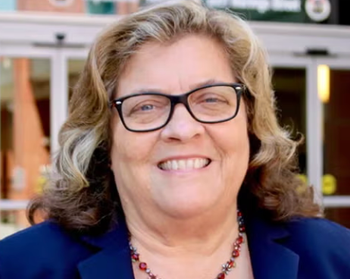
The Experience of Loss, Noise and Health IT
Janae Sharp examines how noise — and stressors facing physicians — can hurt patients.
This year at HIMSS, I connected with Bridget Duffy, M.D., chief medical officer of health IT communications company Vocera and the first chief experience officer at the Cleveland Clinic. We also met with Todd Dunn, who heads innovation in information systems for Intermountain Healthcare. Our discussion focused on information and technologies that are helping to move the needle toward greater physician wellness and an overall healthier workforce.
>> READ:
For Dunn, this includes a mission to find what he calls the “love” metric, which involves him seeing what really brings joy to health practitioners. Part of his journey included being invited to see what physicians’ day-to-day work was like and how it interfered with practitioners’ families and general well-being. “We were talking about a technology one night,” he recounts, “and Dr. Liz, a colleague, said, ‘You need to come to my home at 10 p.m. at night and do documentation with me, so that you will see the amount of work I have to do; it takes away from time with those that I love the most.’”
It was great to hear what
Listen to the interview in 4 parts here:
— janae sharp (@CoherenceMed)
My discussion with Dunn and Duffy is online in a few parts, and you can
When working in a hospital, it can be hard to know which messages are emergencies and which are lower priority. The Chief Nursing Officer of Vocera, Rhonda Collins, DNP, R.N., joined us on the white couches at the Vocera booth, described how too much noise in the hospital and in her outside life adversely affected her ability to give great care, resulting in what could have been a disaster.
At the time, Collins was continuing her nursing education, working and growing in her career, all at the same time. At work, she regularly felt that there was so much information coming at her, that the level of “ambient noise” from her to-do list was untenable. One day, she stepped in to assist on a totally over-capacity labor and delivery floor. There was a medication error; suddenly, she realized she had accidentally given a patient too much Pitocin. It wasn’t the type of error she ever expected to make, as it was due not to lack of knowledge but to the many distracting stressors in her life. With all the messages coming in, it was difficult to get help for a delivery that had turned into an unexpected emergency. As soon as Collins realized what had happened, no one was around. She was screaming in the hallway for help, and an emergency procedure delivered a baby who was blue.
>> READ:
After proper medical intervention, both mother and child, thankfully, went home healthy. However, the story Collins recounts is every mother’s nightmare, not to mention that of every healthcare practitioner.
I had a baby three months ago, and my delivery was relatively uneventful, other than the baby facing the wrong way and some painful back labor. But this story raised the hairs on my back.
Collins’ experience illustrates an important point: If stress in your life outside work is too high, this stress spills over into care. It will impact physicians’ and nurses’ ability to give great care, which can turn into an emergency — or a disaster.
We can try to improve systems, which is important, and we can teach physicians to debrief after a stressful event. We also need to try to account for the noise and humanity of life. Physicians and nurses in training have a lot of noise, such as heavy student loan burden, strenuous requirements and lack of sleep — and that’s in the best circumstances. In the worst situations, noise without mitigation can lead to potentially fatal problems.
Collins eventually transitioned into another aspect of medicine but didn’t ever return to the labor and delivery side as the lead caregiver. Now she is leading, however, in the charge with technology — tools that she asserts would have changed her experience, as well as that of the mom and baby in the labor room.
As our expectations have grown dissonant with the reality of healthcare, there are some things we will never go back to. What can we learn from the things we lose? How do we measure joy in work and well-being? In healthcare, the soldiers at the front lines are a growing group of people who are moving forward while broken open. There will always be losses, but we must help reduce their number with the right technological tools, attention and compassion.
Get the best insights in healthcare analytics
Related








































